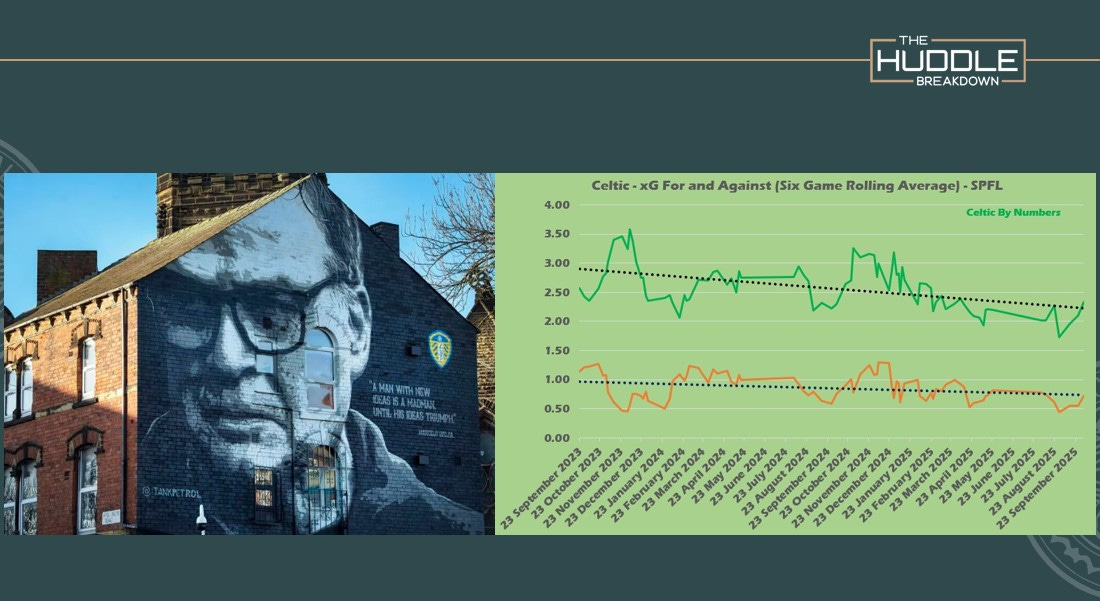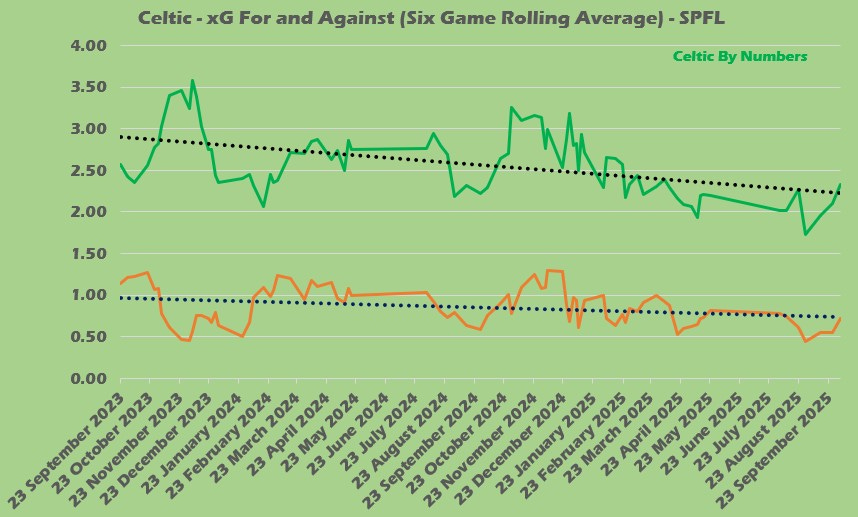A philosophy attributed to the influential Marcelo Bielsa in his writings, lectures and pressers goes along the lines of:
· If you’re not scoring, it’s not necessarily because your forwards are bad, and
· It might be because your defence isn’t advancing the ball well enough, or your midfield isn’t creating opportunities that put forwards in good positions.
That is the premise to be explored today.
The Problem
It is certainly the case that under Brendan Rodgers, Celtic’s attacking output has been trending downwards.
The slightly less bad news is that xG conceded is falling, but at a lesser rate than xG for.
Crucially, the xG difference, based on the model I have always used, is just about holding up around the two mark.
However, the market-leading (in terms of complexity/sophistication – “accuracy” is in the eyes of the beholder) xG model from hudlstatsbomb has Celtic’s xG reducing from 2.11 last season to 1.59 this season. xG against has reduced from 0.65 to 0.49.
So, a reduction in xG difference from 1.46 per game to 1.1 per game. That is perilously close to the 1 xG difference threshold where games can become sticky due to randomness and variance.
I posit that the xG against has not got much further to fall. It is already unsustainably low. And xG for is boosted by two penalties so far – Celtic has scored nine goals from open play in seven league matches.
What needs to change is xG for needs to increase. It is the only way xG difference headroom will get back to the gap that reduces variance and therefore risk.
There are probably a few headlines to attribute to what is going on here:
1. Selling high-performing attacking talent and not replacing it with players of similar quality (Matt O’Riley, Kyogo Furuhashi, Nicolas Kuhn, Adam Idah and, effectively, Jota)
2. SPFL teams’ familiarity with Rodgers’s tactics and approach, and therefore devising specific strategies to limit Celtic’s attacking threat
3. In season three, the increasing effectiveness of Rodgers’s pressing and counterpressing strategies is through learned behaviour.
4. In this season, Celtic are suffering slightly from negative variance – i.e. inspired opposition ‘keeper play and either poor or unfortunate finishing depending on your point of view.
We can attribute the percentages and debate that at leisure, but I wanted to focus on whether the attacking players were to “blame” for the significant drop off of output, or, as Bielsa might posit, we need to look at build-up instead.
For this, I am going to include data starting in the 2020/21 season – our “nadir” benchmark. Then, each subsequent season, as first Ange Postecoglou and then Brendan Rodgers built their teams. Data is from all matches unless stated.
Keep reading with a 7-day free trial
Subscribe to The Huddle Breakdown to keep reading this post and get 7 days of free access to the full post archives.



